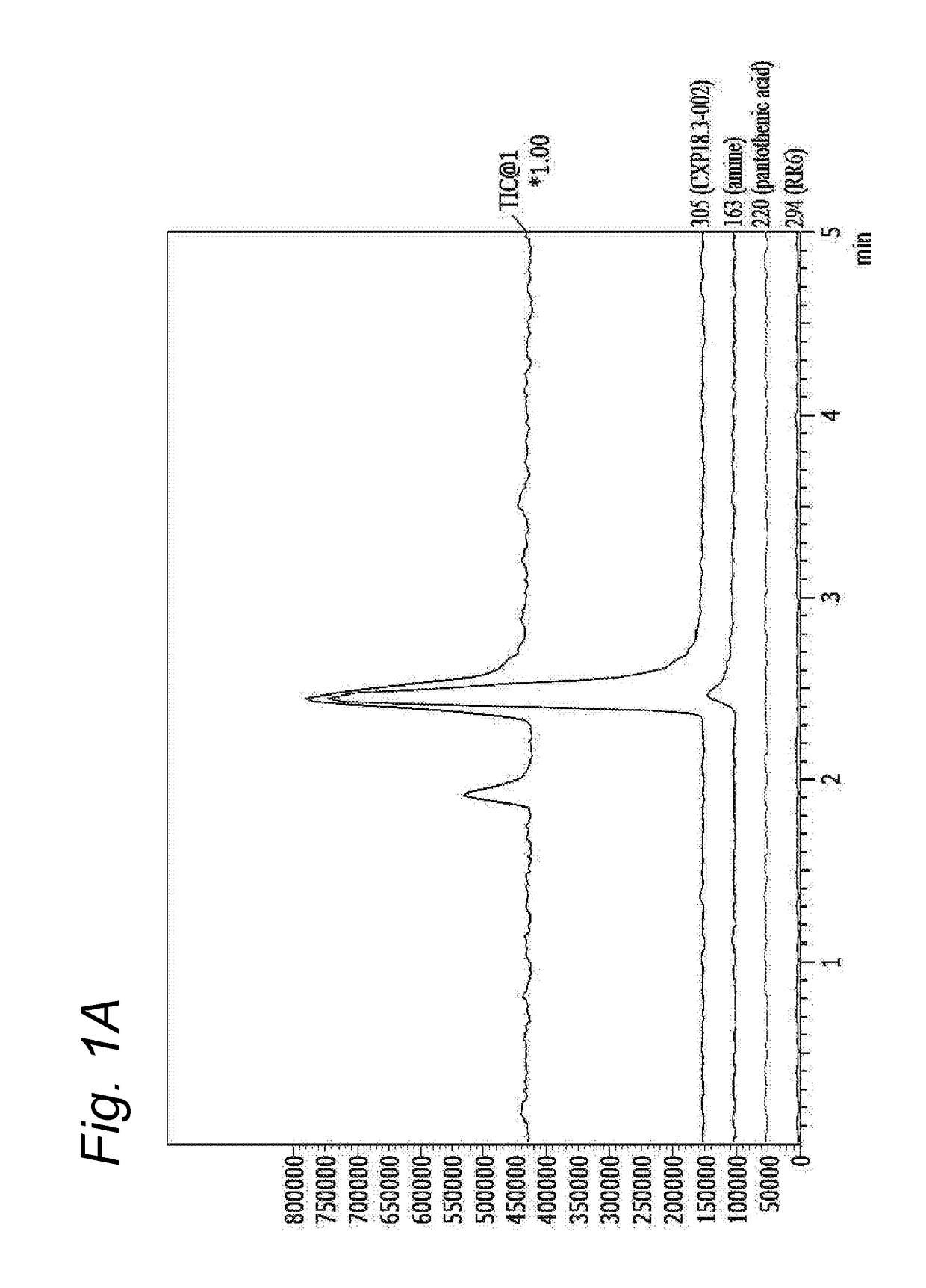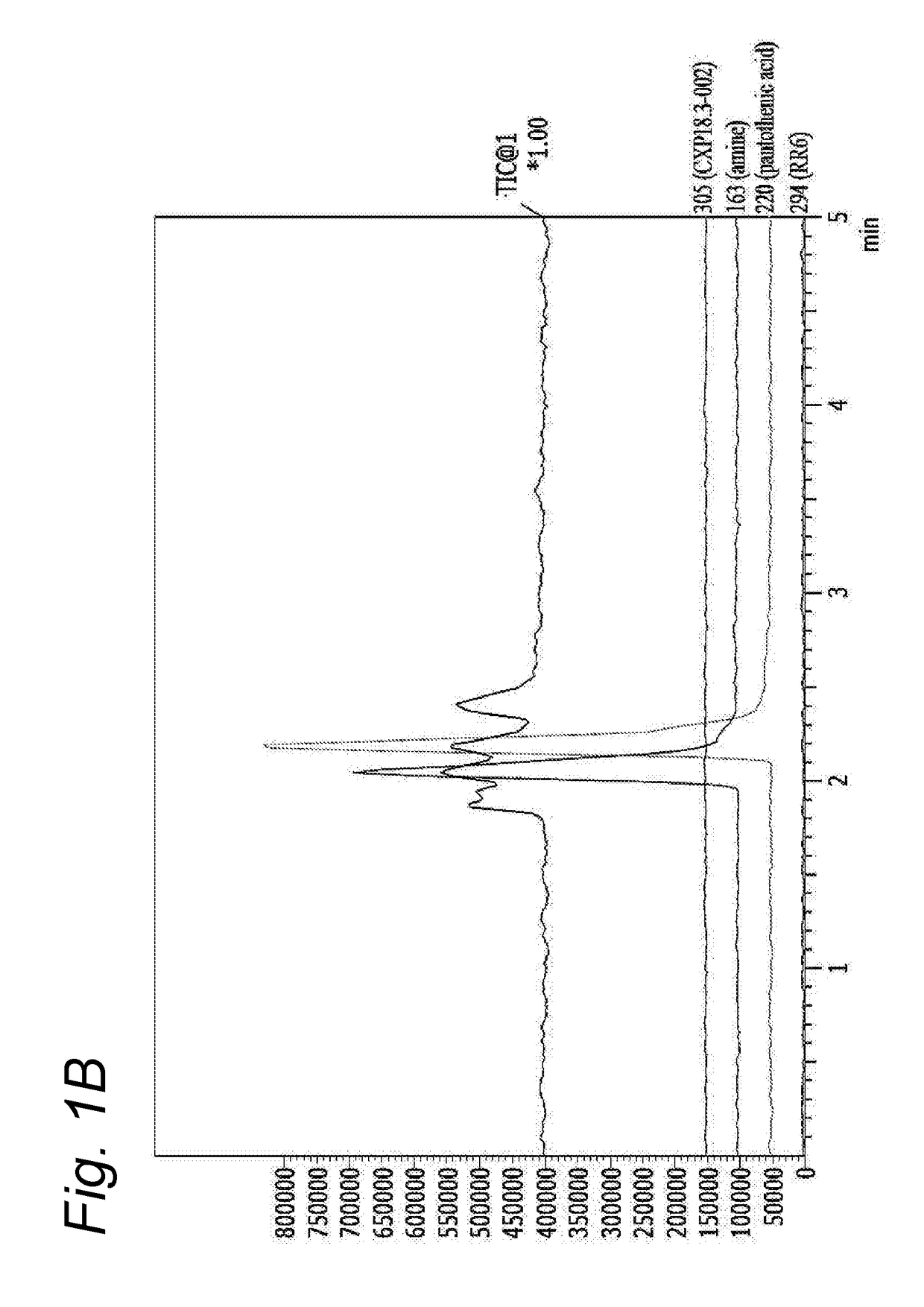Pantothenamide Analogues
a technology of pantothenamide and analogues, which is applied in the field of compounds and compositions having antimicrobial activity, can solve the problems that pantothenamide compounds have never been used, and achieve the effect of conferring stability in body fluids
- Summary
- Abstract
- Description
- Claims
- Application Information
AI Technical Summary
Benefits of technology
Problems solved by technology
Method used
Image
Examples
example 1
of Pantothenamide Analogues
General Information:
[0123]Unless noted otherwise, materials were purchased from commercial suppliers and used as received. All air and moisture sensitive reactions were carried out under an inert atmosphere of dry nitrogen. DCM was dried over Na2SO4 prior to use. Column chromatography was performed using Acros silica gel (0.035-0.070 mm, 6 nm). NMR spectra were recorded at 298 K on a Varian 400 (400 MHz) spectrometer in the solvent indicated. Chemical shifts are given in parts per million (ppm) with respect to tetramethylsilane (0.00 ppm), or CHD2OD (3.31 ppm) as internal standard for 1H NMR. Coupling constants are reported as J values in hertz (Hz).
General Procedure A:
[0124]To a solution of carboxylic acid B (0.5 mmol) in MeCN / H2O (30:1, 4.3 mL) were added HOBt (0.6 mmol), NaHCO3 (0.6 mmol), EDCI (0.6 mmol) and a solution of amine A (for the synthesis see ref 2, 0.6 mmol) in MeCN / H2O (0.7 mL). The progress of the reaction was monitored using LC-MS and upo...
example 2
of Pantothenamide Analogues In Vitro
[0182]Conventional pantothenamides are hydrolysed by pantetheinases in body fluids as shown before (Jansen et al 2013) thereby losing their antimicrobial activity (Jansen et al 2013, Spry et al 2013, PLoS One 8:e54974). Bioisosteric pantothenamides retained their in vitro antimicrobial activity in the presence of serum, as will be shown in the next examples. To examine the stability of analogues in vitro, CXP18.3-002 and its bioisostere CXP18.6-006 were incubated for 16 h at room temperature in PBS with 10% fetal bovine serum as a source of pantetheinase activity. Samples were taken and analyzed by LC-MS using a Shimadzu LC10ATvp HPLC coupled to a Shimadzu LCMS2010 A mass spectrometer. No appreciable degradation of the bioisosteric compound was noted. When the parent pantothenamide CXP18.3-002 was incubated according to this protocol, the compound was completely hydrolysed. The hydrolysis of the pantothenamides by fetal bovine serum could be inhib...
example 3
[0183]To address the question if increased stability would also lead to improved bioavailability in vivo, a pharmacokinetic study was performed. Briefly, the pantothenamides N5-Pan (an antibacterial compound) and CXP18.3-002 (an antimalarial compound), and their corresponding inverted amides CXP18.6-013 and CXP18.6-006 were administered to rats at 50 mg / kg dissolved in saline. Blood samples were collected from 3 rats before the experiment and at 0.25, 0.5, 1, 2, 4, 6, 8, 12 and 24 h. The concentrations of the compounds were analyzed by LC-MS / MS (AB Sciex API-4000 system). Data were analyzed by the Non-compartmental analysis tool of Phoenix WinNonlin (Version 6.3). Table 2 lists the pharmacokinetic parameters.
TABLE 2Pharmacokinetic parameters of pantothenamidesand cognate analogues.CompoundTmax (h)Cmax (ng / mL)AUCinf (hr * ng / mL)T1 / 2 (h)N5-PanNCNCNCNCCXP18.3-0020.55NCNCCXP18.6-0130.3312073115515.9CXP18.6-0060.333364 66223.6NC: not calculated as levels were too low / below the det...
PUM
| Property | Measurement | Unit |
|---|---|---|
| enantiomeric excess | aaaaa | aaaaa |
| enantiomeric excess | aaaaa | aaaaa |
| enantiomeric excess | aaaaa | aaaaa |
Abstract
Description
Claims
Application Information
 Login to View More
Login to View More - R&D
- Intellectual Property
- Life Sciences
- Materials
- Tech Scout
- Unparalleled Data Quality
- Higher Quality Content
- 60% Fewer Hallucinations
Browse by: Latest US Patents, China's latest patents, Technical Efficacy Thesaurus, Application Domain, Technology Topic, Popular Technical Reports.
© 2025 PatSnap. All rights reserved.Legal|Privacy policy|Modern Slavery Act Transparency Statement|Sitemap|About US| Contact US: help@patsnap.com



